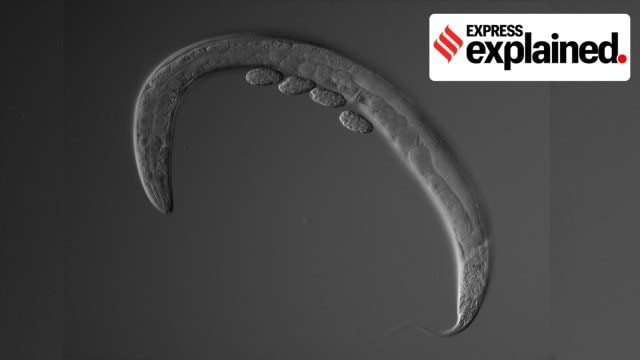Caenorhabditis elegans (C. elegans)

- 22 Oct 2024
In News:
The tiny nematode Caenorhabditis elegans (C. elegans) has played an outsized role in scientific discovery, contributing to four Nobel Prizes over the years.
Key Discoveries from C. elegans Research
- C. elegans and Cellular Processes:
- The worm has helped scientists understand programmed cell death (apoptosis), a vital process in development and disease. This work contributed to the 2002 Nobel Prize in Physiology or Medicine, addressing how cells are instructed to kill themselves and how this process goes awry in conditions like AIDS, strokes, and degenerative diseases.
- Gene Silencing and RNA Interference:
- In 2006, a Nobel Prize was awarded for the discovery of gene silencing via RNA interference (RNAi), a process first explored using C. elegans. This discovery led to the development of a new class of RNA-based drugs.
- Cellular Imaging Techniques:
- In 2008, C. elegans contributed to breakthroughs in cellular imaging, as its use helped invent cellular “lanterns” that allowed scientists to visualize the inner workings of cells, earning a Chemistry Nobel.
- Gary Ruvkun’s 2024 Nobel:
- Gary Ruvkun’s Nobel Prize in Physiology or Medicine in 2024 was the fourth in a series of Nobel recognitions stemming from C. elegans research, reinforcing its role in fundamental biological discoveries.
Key Facts About Caenorhabditis elegans (C. elegans):
- Size: 1 millimeter long.
- Life Cycle: Completes in 3-5 days.
- Cell Count: 959 cells.
- Genome: First multicellular organism to have its full genome sequenced in 1998.
- Sexual Reproduction: Hermaphroditic (self-fertilizing) and male.
- Scientific Role: Used to study genetics, developmental biology, neuroscience, and cell biology.
- Nobel Prize Contributions: Four Nobel Prizes, including those in Physiology, Medicine, and Chemistry, for advancements in cell death, gene silencing, and imaging.
